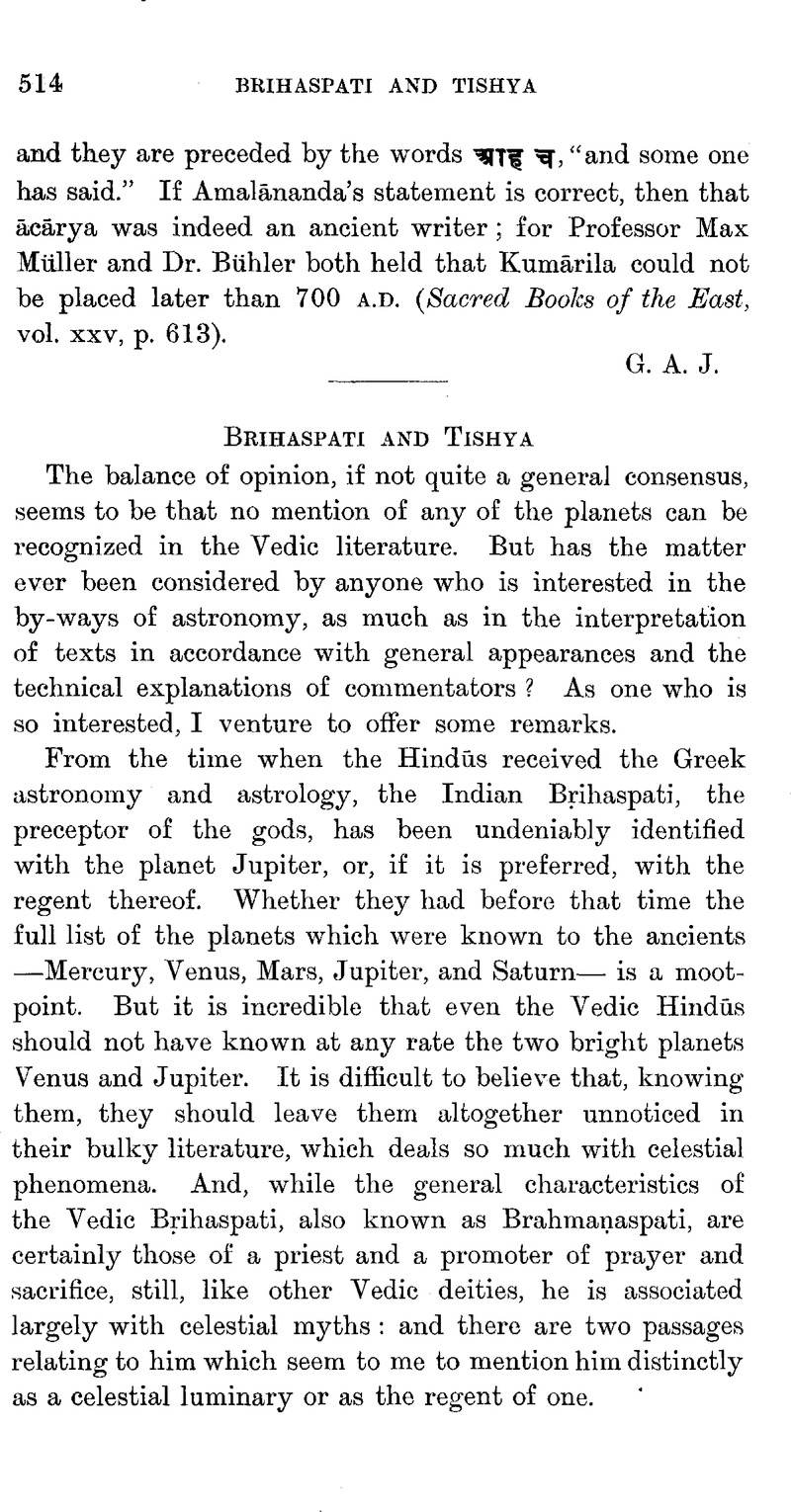No CrossRef data available.

page 515 note 1 Text in Bibl. Ind., vol. 3, p. 2. The verse also occurs, I think, as Taittirlya-Sarhhitā, 4. 4. 10. 1.
page 516 note 1 See Colebrooke, , Essays, 2Google Scholar. 294; Whitney, , Sūrya-Siddhānta, translation, 331Google Scholar.
page 516 note 2 Clerke, A. M., System of the Stars, p. 241Google Scholar: the references are, for Aratus, , Diosemeia, verses 160–80Google Scholar, 265; for Theophrastus, , De Signis Pluviarum, ed. , Heinsius, p. 419Google Scholar. We may compare Pliny, , Nat. Hist., 18Google Scholar. 80:—“In the sign Cancer there are two small stars, known as Aselli (the Little Asses, 7 and 5 Cancri), the small space between them being occupied by a cloudy appearance which is known as Praesepia: when this cloud is not visible in a clear sky, it is a presage of.a violent storm.”
page 517 note 1 Anyone who has watched the stars in winter in India will appreciate the kind of appearance that I indicate: especially if he saw the meeting' of Venus and Jupiter some twenty years ago.
page 517 note 2 See Thibaut, , in Ind. Ant., 14Google Scholar. 43–5.